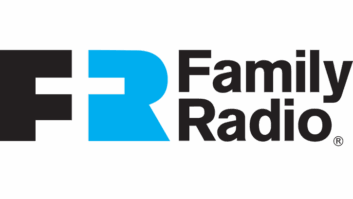Top 10 Tech Tips for successful HD radio installation
May 2, 2008 12:00 PM, By Benjamin Brinitzer, CPBE
Since 2004 I have managed many different HD Radio installation projects and have had the opportunity to learn a great deal about the special considerations for different installation methods. HD Radio installations have special needs and challenges, and what follows is my Top 10 List for HD Radio installation planning and implementation. This list primarily applies to FM installations, but the top three also apply to AM.
10)Choose the right high-level hybrid ratio – Did you know you can save thousands of dollars in equipment and ongoing expense costs by choosing the right power split for your hybrid? 10dB is only one option, if you have at least 15 percent headroom in the analog transmitter, consider an 8dB hybrid. The 8dB split will result in 15 percent of the analog power and 85 percent of the digital power being burned in the load. This reduces the power requirement of the digital transmitter and it means that more power will be burned at greater efficiency. Therefore your power bills and installation costs will be lower.
9)In a space-combined system, match the gain (number of antenna bays) of the digital antenna to the main antenna – If using a separate antenna, it is best to install one with the same gain and on the same orientation as the main antenna. The reason is that an antenna with fewer bays will have elevation nulls fall at different locations than the main, thus resulting in areas where the digital will far exceed the analog level. This may cause interference on some receivers.
8)Provide power operation interlocks – Interlocks are needed to maintain the injection ratio of digital carriers in space combined and split-level/high-level systems. Remember, if your analog transmitter operates at reduced power, you must adjust the digital transmitter lower to maintain the ratio. Remote controls with automated scripts are the best option here.
7)RF isolation protection – In high-level systems, interlocks are needed to protect the digital transmitter in the event of damage to the reject load or a change in match to the main antenna. Either of these will result in power crosstalk into the digital transmitter, which will damage the digital transmitter even if the transmitter is off. Wire an interlock that watches the VSWR of the digital and switches the analog direct to the main antenna bypassing injectors if the level exceeds a safe level.
6)Provide plenty of sample line sections in the system – Spectrum mask compliance is derived using directional couplers after filters in the system. Make sure you have enough slug-based line sections in the system: One on the total system output, dummy load, reject load if present, analog transmitter output and digital transmitter output.
5)Check the power feeds – The power load and bill will increase anywhere from 10 percent to 60 percent depending on the methods employed. Is the power service sufficient? What about the transfer switch and generator?
4)Check the HVAC – An HD Radio transmitter running in linear mode requires more cooling than an existing analog transmitter. If an internal reject load is used, on average this will add significant cooling needs.
3)Diversity delay and monitoring alarms – We must operate with our digital and analog signals synced or we stand to lose the HD Radio game. The days of monitoring the signal live in a control room are over. You must install a processed air monitor side chain with no delay. Since no one is monitoring the air signal, alarms should be installed to notify the operator of transmitter and audio chain failures.
2)Proper monitoring and test equipment needed – Every tube transmitter site will need access to a good spectrum analyzer meeting the specifications required for HD Radio mask monitoring. It is clear under current technology that adjustment to meet the mask is required with every tube replacement. Also very helpful is a system for monitoring diversity delay synchronization between digital and analog as well as level match. One manufacturer we know of satisfies this need very well. Your existing analog modulation monitor is not adequate and in fact will result in erroneous readings. This is a call to manufacturers to develop a spectrum analyzer at a reasonable cost for deployment.
1)IT data delivery systems and configuration/training required – At number one is the need to install and understand the data link for delivery to the transmitter site. If you don’t know what a layer 3 switch is you should find out. If your IT infrastructure breaks, your HD Radio carriers will fail. Integral to this is the quality of the STL path. The number one issue we have faced are STL paths that need improvements. They work fine for analog, but put a digital system on the path and it fails. Take time to learn about data management. Without a good data path to the transmitter your entire HD Radio installation will fail.
Brinitzer is regional VP engineering for Clear Channel Radio. He is based in Charlotte, NC.







